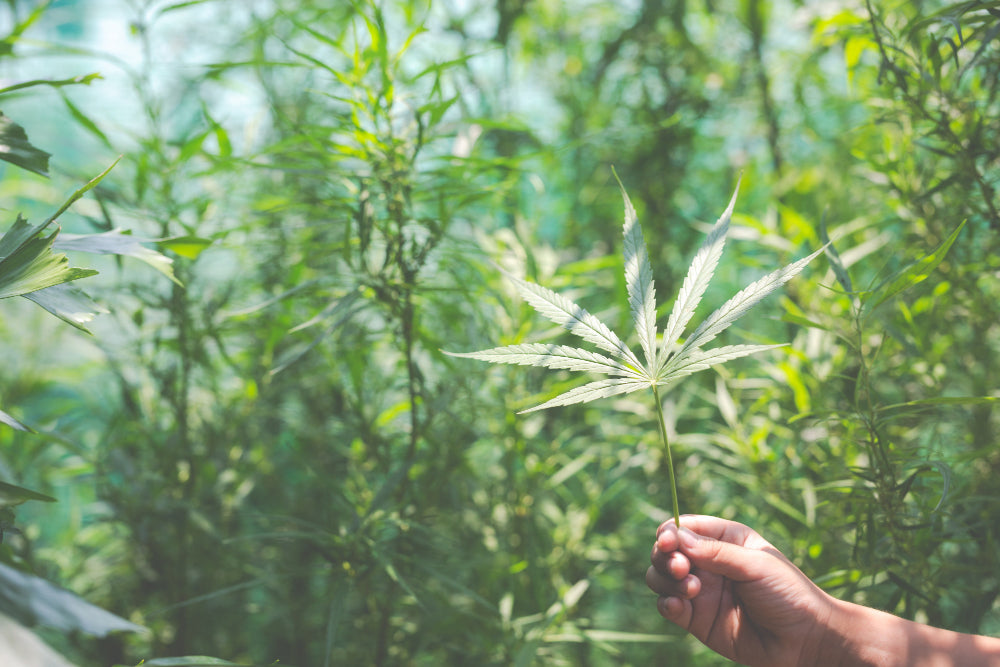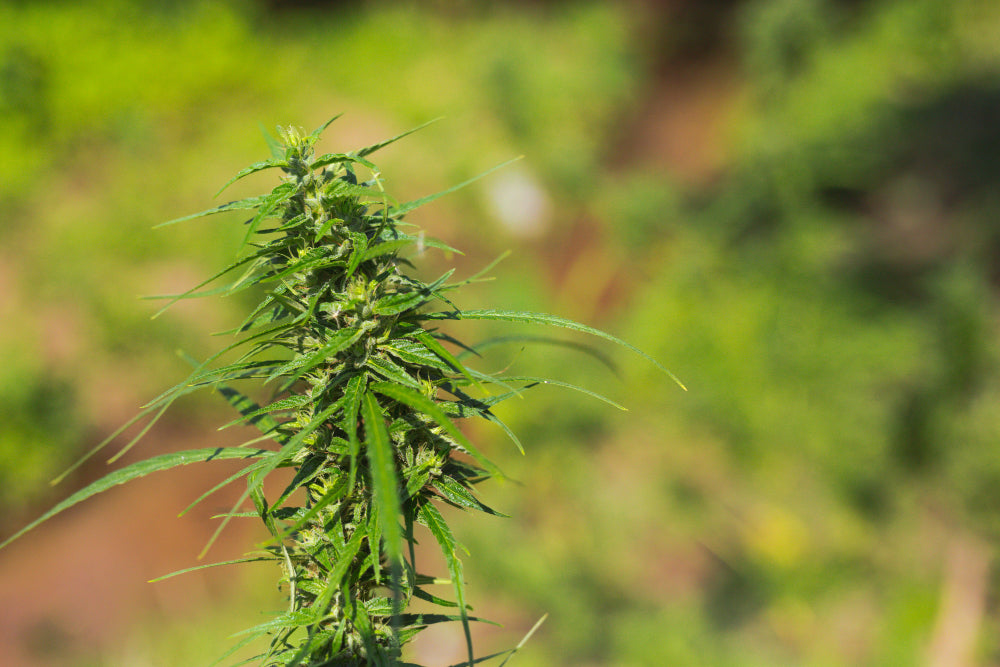CBDP: Towards the Cannabinoid Revolution

Inhaltsverzeichnis
- What is CBDP?
- Why does it attract the interest of researchers and enthusiasts?
- Potential of CBDP: The promise of CBDP as a promising cannabinoid
- How does CBDP work?
- Is CBDP psychoactive?
- CBDP and THCP: Their connection and differences
- The uniqueness of CBDP
- Is CBDP a synthetic cannabinoid?
- The right dosage of CBDP
- Is CBDP stronger than CBD?
- What side effects can occur when taking CBDP?
- Where can I buy CBDP?
- Conclusion
What is CBDP?
CBDP, short for cannabidiphorol, is a relatively newly discovered cannabinoid found in some cannabis strains. It is one of a growing list of compounds found in the cannabis plant that can potentially provide medicinal benefits. Unlike the more well-known cannabinoids like THC and CBD, CBDP is not yet as well researched, but it has already attracted the attention of researchers and enthusiasts alike.
Why does it attract the interest of researchers and enthusiasts?
Cannabinoid research has made significant progress in recent years, and CBDP is one of the latest discoveries to attract the attention of scientists and cannabis enthusiasts. There are several reasons why CBDP has generated so much interest:
-
Potential therapeutic uses: Early studies suggest that CBDP may have promising therapeutic effects, similar to CBD and THC. This could mean that CBDP could be useful for a variety of health issues, from pain relief to treating anxiety.
-
Unique chemical structure: CBDP differs from other cannabinoids in its chemical structure, making it an interesting research subject. Scientists are interested in understanding exactly how CBDP works in the body and how it differs from other cannabinoids.
-
Potential for new medical developments: The discovery of new cannabinoids such as CBDP may open up completely new avenues for medical treatments. This could mean that CBDP will become part of a new generation of medicines based on cannabis-based therapies.
Overall, CBDP is an exciting new discovery in the world of cannabinoids that has the potential to change the way we look at medical treatments. Scientists and enthusiasts alike are eager to learn more about this fascinating cannabinoid and what role it might play in the future.
Potential of CBDP: The promise of CBDP as a promising cannabinoid
Comparison with other cannabinoids: What makes CBDP different?
CBDP differs from other cannabinoids in several key aspects that could influence its potential as a therapeutic agent:
-
Chemical Structure: CBDP has a unique chemical structure compared to other cannabinoids such as THC and CBD. This structure can influence its interaction with the cannabinoid receptors in the body and lead to different effects.
-
How it works: Early research suggests that CBDP may have a stronger effect than CBD. This could mean that CBDP could potentially be more effective at relieving symptoms of certain diseases.
-
Applications: Although research on CBDP is still in its infancy, there is already evidence that it could have a variety of uses. These include potential benefits for pain relief, anti-inflammatory, anxiety treatment, and even neuroprotective effects.
Early evidence on the effects of CBDP and its potential applications
Early studies on CBDP suggest a promising range of potential applications:
-
Pain Relief: CBDP could be an effective option for people suffering from chronic pain by affecting the sensation of pain in the body.
-
Anti-inflammatory: Anti-inflammatory properties of CBDP could be useful in treating inflammatory conditions such as arthritis or chronic intestinal disease.
-
Anxiety Treatment: CBDP could play a role in relieving anxiety by having calming and relaxing effects on the mind.
-
Neuroprotective Effects: It is also being studied whether CBDP has neuroprotective properties that could help protect the brain from damage and slow or prevent neurodegenerative diseases.
Overall, early evidence suggests that CBDP is a promising cannabinoid with a wide range of potential uses. However, further research is needed to understand its full potential and confirm its effectiveness and safety.
How does CBDP work?
CBDP works in the body through its interaction with the endocannabinoid system (ECS), a complex network of receptors and molecules that plays an important role in the regulation of various physiological processes. CBDP's potential mode of action is the subject of intense research, but previous evidence suggests that it may work in a similar way to other cannabinoids.
CBDP could bind to cannabinoid receptors in the body, particularly the CB1 and CB2 receptors, which are part of the ECS. This binding could influence various biological processes, including pain sensation, inflammatory responses, mood regulation and even the immune system.
In addition, CBDP could also work by interacting with other receptors and signaling pathways in the body that are not directly linked to the ECS. This may explain why CBDP may have a wide range of potential therapeutic uses beyond those of other cannabinoids.
It is important to note that exactly how CBDP works is not yet fully understood and further research is needed to understand its full potential. Through careful experiments and clinical studies, scientists can learn more about how CBDP works in the body and how it can be most effectively used for medical applications.
Is CBDP psychoactive?
The question of the psychoactive effects of CBDP is an important aspect that is often discussed, especially in connection with cannabinoids. Unlike THC, which is known for its psychoactive effects and can cause a “high” feeling, CBD is often considered non-psychoactive. But what about CBDP?
Research to date suggests that CBDP is generally not psychoactive. Unlike THC, CBDP may not interact directly with the CB1 receptors in the central nervous system, which are responsible for the psychoactive effects of THC. Instead, CBDP could exert its effects through other mechanisms, such as modulating neurotransmitters or influencing other receptors in the brain.
However, it is important to note that the question of CBDP's psychoactivity has not yet been conclusively resolved and further research is needed to confirm this. Some studies have shown that CBDP may have a mild sedative effect that could be perceived as relaxing or calming, but this does not necessarily mean that it is psychoactive.
Another important point is comparing CBDP to other cannabinoids such as THC. Compared to THC, CBDP likely has a much lower affinity for the CB1 receptors, which could explain why it is less psychoactive. Nevertheless, it is important to further study the specific effects of CBDP on the brain and behavior to gain a comprehensive understanding of its potential effects.
Overall, the question of whether CBDP is psychoactive is complex and requires further study. While there is evidence that CBDP is generally not psychoactive, further studies need to be conducted to confirm this and gain a full understanding of its effects.
CBDP and THCP: Their connection and differences
CBDP and THCP are two cannabinoids that are found in some cannabis strains and are attracting increasing research interest. Their relationship to one another is the subject of intensive research as they may have common properties or differ in their effects.
THCP, also known as tetrahydrocannabiphorol, is a THC analogue that may have much stronger psychoactive effects than traditional THC. THCP is believed to have a higher affinity for the CB1 receptors in the brain, which could lead to an enhanced effect.
CBDP, on the other hand, is a cannabinoid that may not be psychoactive and has a variety of potential therapeutic uses. It is believed that CBDP may have a stronger effect than CBD, although further research is needed to confirm this.
Regarding their relationship to each other, it is known that CBDP and THCP can occur together in some cannabis strains. This suggests that they could potentially have synergistic or complementary effects when consumed together.
Some studies suggest that CBDP may modulate the effects of THC by affecting certain receptors in the brain. This could cause CBDP to weaken or increase the psychoactive effects of THCP, depending on dosage and other factors.
Overall, the relationship between CBDP and THCP is an interesting area of research that requires further investigation to understand its full potential. By exploring their synergistic or differential effects, new insights into the effectiveness and safety of these cannabinoids could be gained.
The uniqueness of CBDP
CBDP, or cannabidiphorol, is a cannabinoid found in some cannabis strains and is attracting increasing interest in medical research and the cannabis community. What makes CBDP special are its unique characteristics compared to other cannabinoids.
Unlike THC, which is known for its psychoactive effects, and CBD, which is often valued for its calming and anti-inflammatory properties, CBDP has an interesting combination of characteristics. CBDP is believed to be non-psychoactive, meaning it does not cause the “high” effects associated with THC. Instead, CBDP may have a more potent effect than CBD, making it a promising candidate for a variety of medical uses.
Early studies suggest that CBDP could potentially have pain-relieving, anti-inflammatory, and even neuroprotective properties. This could mean that CBDP could be used to treat conditions such as chronic pain, inflammation, anxiety and even neurodegenerative diseases.
Another special feature of CBDP is its possible role in modulating the effects of other cannabinoids such as THC. Some studies suggest that CBDP may influence the effects of THC in the body by modulating or antagonizing certain receptors. This could help reduce the unwanted psychoactive side effects of THC while maintaining its therapeutic benefits.
Overall, CBDP offers a fascinating perspective for the future of cannabinoid therapy. Its unique characteristics and potential applications make it a promising candidate for further research and could usher in a new era of medical treatments based on cannabis-based therapies.
Is CBDP a synthetic cannabinoid?
CBDP is a cannabinoid that occurs naturally in some cannabis strains. Unlike synthetic cannabinoids that are created in a laboratory, CBDP is extracted directly from the cannabis plant. This natural origin makes CBDP attractive to many people as they prefer natural remedies and value the plant's potential for therapeutic purposes.
Although CBDP occurs naturally in the cannabis plant, it is also possible to produce CBDP synthetically. This is achieved through various chemical processes that use specific raw materials to synthesize CBDP in the laboratory. Synthetic production of CBDP can be useful for research purposes as it allows for more precise control over the composition and purity of the final product.
It is important to note that the synthetic production of CBDP may raise ethical and regulatory issues in some cases. Some people prefer natural sources for their medications and are concerned about possible contaminants or byproducts that may occur during synthetic manufacturing. On the other hand, synthetic production of CBDP can be a cheaper and more reproducible option, especially for mass production of medicines or research purposes.
Overall, CBDP is a fascinating cannabinoid with a variety of potential uses. Whether of natural origin or synthetically produced, the study of its properties and effects will continue to attract the attention of researchers and enthusiasts as we learn more about the diverse possibilities of this fascinating molecule.
The right dosage of CBDP
Determining the correct dosage of CBDP is crucial to achieve the desired effects and avoid potential side effects. Because CBDP has not been as widely researched as other cannabinoids, there are no set dosage guidelines. However, there are some recommendations and application methods that can be taken into account.
When dosing CBDP, it is important to start with a low dose and increase slowly to test individual tolerance. This makes it possible to minimize potential undesirable effects and find the optimal dosage. Some experts recommend starting with a dose of around 2-5 mg of CBDP per day and gradually increasing until the desired effects are achieved.
The method of use can also affect the dosage of CBDP. CBDP can be consumed in various forms including oils, capsules, tinctures, and topicals. Each of these forms has different bioavailability and may therefore require different dosages. For example, topical products have lower bioavailability than products taken orally, meaning a higher dosage may be required to achieve the same effects.
It is also important to note that the optimal dosage of CBDP depends on various factors, including individual body weight, metabolism, health conditions, and sensitivity to cannabinoids. Therefore, it is advisable to consult with a doctor or a qualified professional to determine an appropriate dosage, especially if you are already taking other medications or have health problems.
Overall, CBDP dosage is an individual matter that requires careful advice and monitoring. By taking a step-by-step approach and working with a professional, you can find the optimal dosage of CBDP to best meet your needs.
Is CBDP stronger than CBD?
The claim that CBDP is 30 times stronger than CBD is widespread in the cannabis community and has led to increased interest in this cannabinoid. However, it is important to critically question this claim and take existing research results into account.
Previous studies on CBDP are limited, and there are few direct comparisons between CBDP and CBD in terms of strength or effectiveness. Some early experimental studies suggest that CBDP may have a stronger pharmacological effect than CBD, but the exact nature of this effect is not yet fully understood.
It is important to note that the strength of a cannabinoid depends on various factors, including dosage, route of administration, and the body's individual response. Therefore, it is difficult to make an accurate statement about whether CBDP is actually 30 times stronger than CBD without sufficient scientific data and clinical studies.
Another important point is that the potency of a cannabinoid does not necessarily equate to its therapeutic effectiveness. Even if CBDP has a stronger pharmacological effect than CBD, that does not necessarily mean that it is more effective in treating certain diseases. The therapeutic effectiveness of a cannabinoid depends on a variety of factors, including its specific mechanisms of action, its bioavailability, and its interaction with other substances in the body.
Overall, the claim that CBDP is 30 times more powerful than CBD is preliminary and requires further research to confirm or refute it. It is important to remain skeptical and rely on sound science before drawing conclusions. Until further research is conducted, the exact strength of CBDP compared to CBD remains an open question.
What side effects can occur when taking CBDP?
The potential side effects of CBDP are an important aspect to consider when considering this cannabinoid. Although CBDP is generally considered safe, there are some possible risks that should be kept in mind.
Previous research on the side effects of CBDP is limited because this cannabinoid has not been as widely researched as others such as CBD or THC. However, there is some evidence that CBDP may cause adverse reactions in some people.
A possible side effect of CBDP could be sedation or sleepiness, especially at higher doses. Some users also report gastrointestinal symptoms such as nausea or stomach upset after taking CBDP. However, these side effects are rare and usually only occur in sensitive people or when consumed in excess.
It is important to note that most studies on CBDP to date have been conducted on animals, and further human research is needed to better understand the exact side effects and risks. Additionally, individual factors such as dosage, route of administration, and each individual's overall health may affect the likelihood and severity of side effects.
Although CBDP is generally considered safe, it is advisable to speak with a doctor before taking CBDP, especially if you are already taking medication or have chronic health conditions. Your doctor can help you evaluate potential risks and determine the correct dosage and method of administration for your individual needs.
Where can I buy CBDP?
The availability of CBDP may vary depending on location and applicable laws and regulations. In some regions, CBDP may be available for sale freely, while in others it may be highly regulated or even illegal. Therefore, it is important to check the legal regulations in your region before purchasing CBDP.
If CBDP is legal and freely sold in your area, there are several ways to purchase it. Some pharmacies and health stores may carry CBDP products, especially those that specialize in natural and herbal remedies. Online stores are another popular source for purchasing CBDP as they can offer a wide range of products and brands.
When purchasing CBDP, it is important to pay attention to the quality and purity of the product. Make sure to buy products from trusted manufacturers who have their products tested for quality and purity. Third-party certificates can help verify the authenticity and quality of a CBDP product.
Additionally, it is advisable to carefully review the ingredients and dosage information to ensure the product meets your individual needs. Some CBDP products may also contain other ingredients that may provide additional health benefits, such as: B. terpenes or other cannabinoids.
Finally, it is important to educate yourself on the applicable laws and regulations regarding the purchase and use of CBDP in your area. Even if CBDP is legal, certain restrictions may apply, such as: B. a minimum age for purchasing or using CBDP products.
By educating yourself on the legal regulations and carefully selecting high-quality CBDP products, you can ensure that you can benefit from the potential health benefits of this fascinating cannabinoid.
Conclusion
Overall, CBDP, as a relatively new cannabinoid, offers promising potential for medical research and the cannabis industry. Its unique characteristics and potential applications make it a fascinating object of study. Nevertheless, there are still many open questions and areas that need further research to gain a comprehensive understanding of CBDP and its effects on the human body.
It is important that future studies focus on the safety, effectiveness and potential therapeutic uses of CBDP to define its role in medical practice. Through careful research and evaluation, we can better understand how CBDP can be used to treat various health conditions and how it may differ from other cannabinoids.
Additionally, it is important that consumers pay attention to quality, purity and legality when purchasing CBDP products. Choosing high-quality products from trusted manufacturers can help maximize the potential health benefits of CBDP and minimize the risk of side effects.
Overall, the growing research on CBDP shows that this cannabinoid offers promising possibilities for the future of medical cannabis therapy. With further research and development, we could gain new insights that will help improve the health and well-being of many people.





